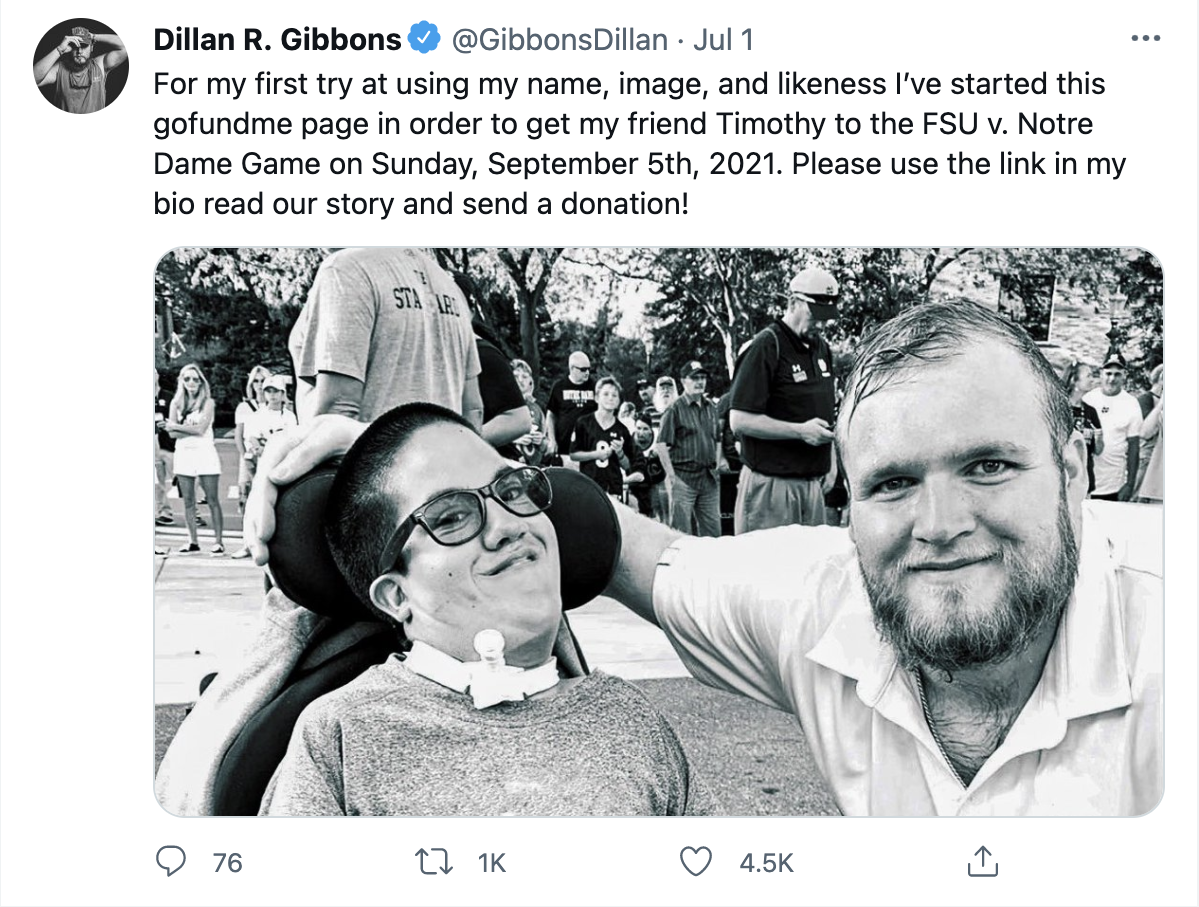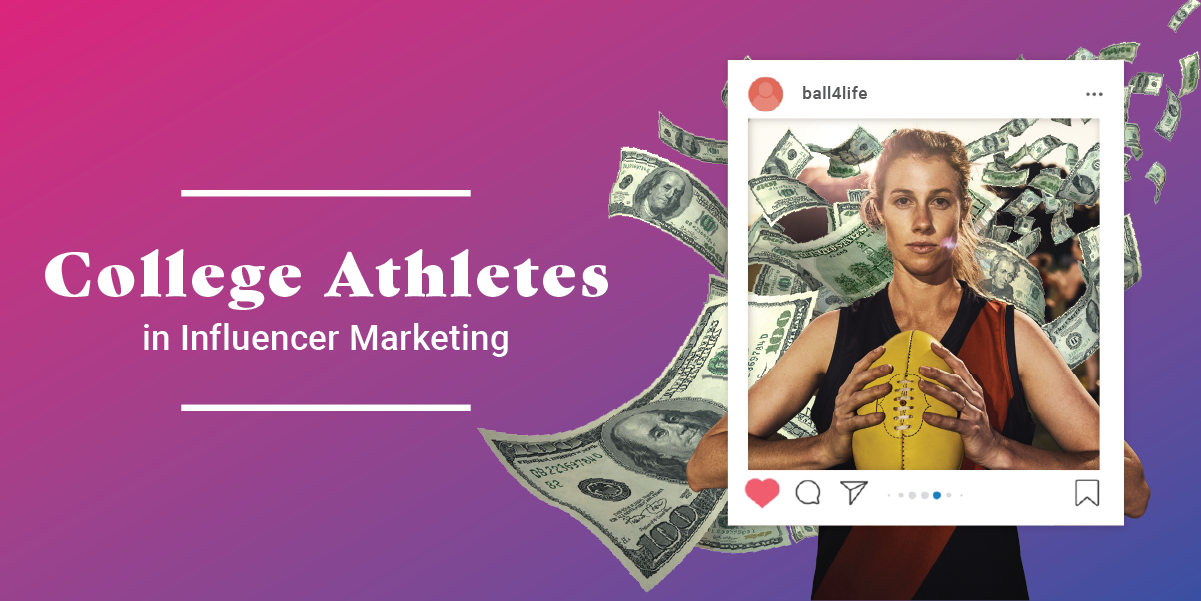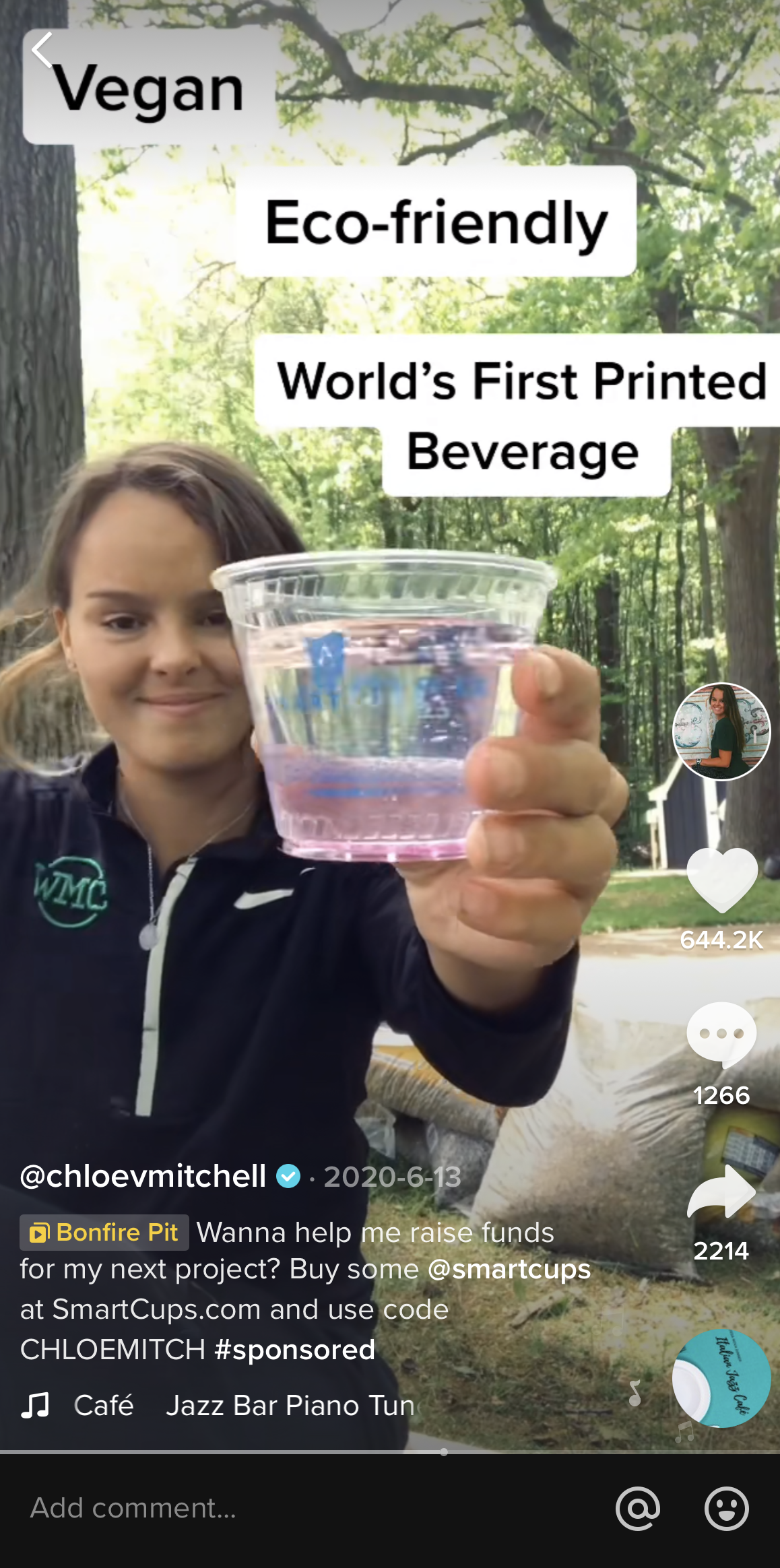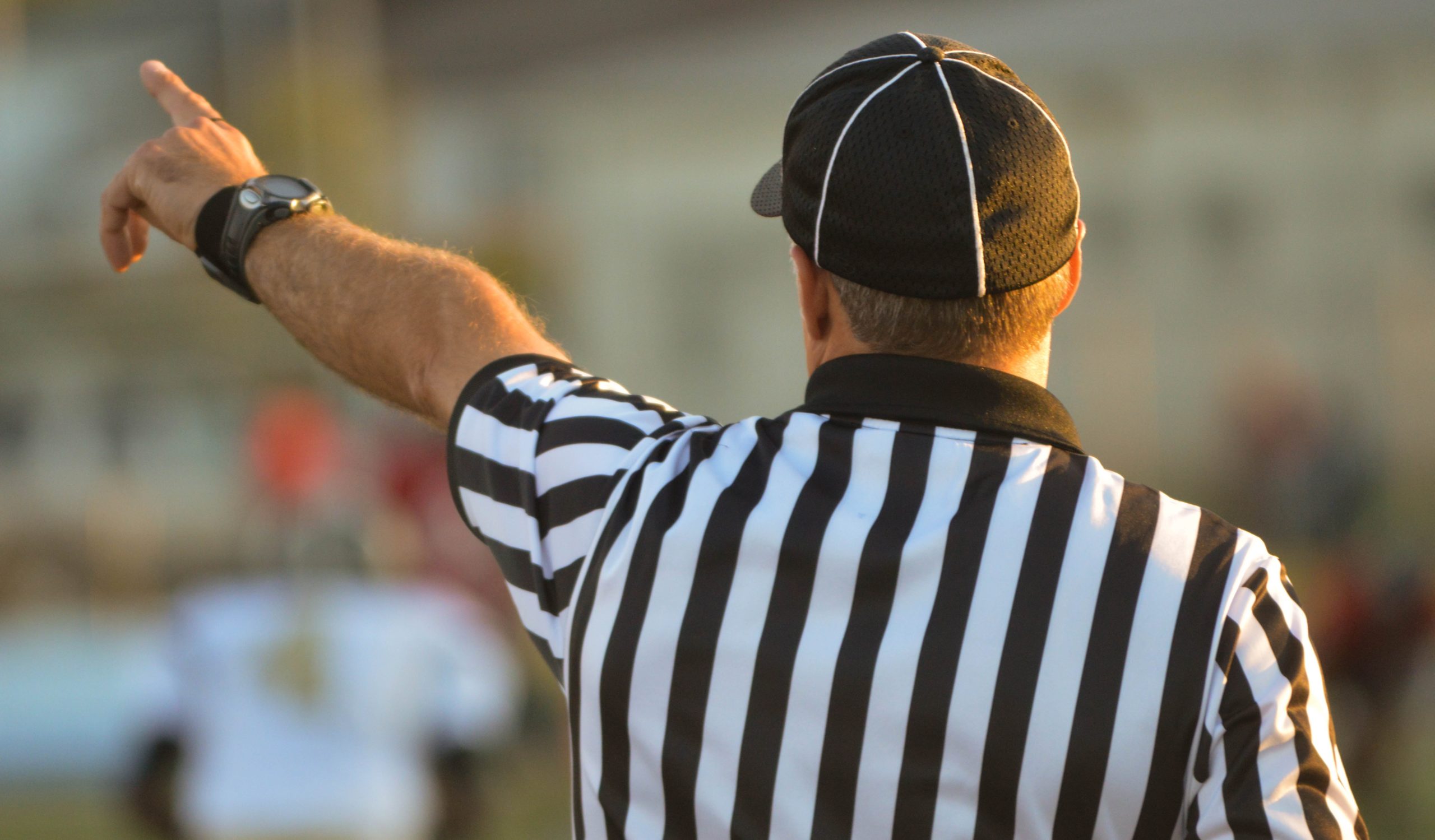The Influence of Athletes
Legendary athletes are known for their physical talent, but more importantly, they’re remembered for the impact they have on the world.
“Use your success, wealth, and influence to put them in the best position to realize their own dreams and find their true purpose.”
– Kobe Bryant

World-renowned soccer player Cristiano Ronaldo stayed true to himself during a press conference when he moved coke bottles out of the shot and grabbed his water bottle. Coca-Cola shares dropped billions, but other companies like IKEA profited from the situation. How does one person hold so much power and influence over what fans think about and consume?
It’s simple: die-hard fans love what their favorite athletes love and they hate what they hate. And when 80% of fans use social media during live sporting events, brands have newfound opportunities, not only on billboards at stadiums and commercials on TV but also on players’ social media platforms.
What if there was a new group of athletes ready to win the influencer marketing game?
College Athletes. For decades, there were laws in place that prohibited college athletes from taking brand deals. They’ve been an untapped market for dozens of years. An untapped market that just opened wide.
The NIL Era: College Athletes Join the Creator Economy
As of July 1, 2021, the NCAA announced an interim policy that allows student-athletes to monetize their name, image, and likeness (often referred to as “NIL”).
The policy provides the following guidance:
- Individuals can engage in NIL activities that are consistent with the law of the state where the school is located. Colleges and universities may be a resource for state law questions.
- College athletes who attend a school in a state without a NIL law can engage in this type of activity without violating NCAA rules related to name, image, and likeness.
- Individuals can use a professional services provider for NIL activities.
- Student-athletes should report NIL activities consistent with state law or school and conference requirements to their school.
“The same way we see brands like Under Armour and Nike partnering with different athletes, we are going to see that starting to happen with college athletes now. Essentially it really opens up the talent pool for brand endorsements and brands to especially leverage the likeness of these athletes.” – Eric Dahan, CEO of Open Influence, an influencer agency in Los Angeles and worldwide
How Brands Can Get in the Game
Brands will also be able to capitalize on this recent announcement. Let’s discuss the implications of NIL to help drive the conversation home.
In the midst of these critical changes, most argue that the new NIL landscape is here to stay. Schools have built extensive frameworks within which their athletes can maximize brand potential. Teams are advising their athletes on how to grow their personal brands online and open up opportunities in the influencer marketing landscape.
Advantages of Partnering with College Athletes
NIL right now is “the Wild West” of sponsorships, yet brands have every incentive to get in the game early. Let’s dive into what makes college athlete partnerships so appealing:
- They are cost-effective: The current landscape presents favorable economics as college-athletes have not quite reached celebrity status. In addition, as of today, brands will most likely capitalize on their name and likeness rather than their content creation skills. This could change over time as the industry gains traction.
- Hyper-local reach, National Scale: Brands have already started to explore this untapped market and find opportunities to connect with these loyal niche audiences.
“To date, several partnerships have been market-focused, with local businesses in the area partnering with single players or groups of players where regional interest overlaps, driving brand advocacy to fans in that university’s surrounding area.” – Diana Perlov, Account Director of Open Influence, a global influencer agency.The hyper-local reach of these personalities is a goldmine for small and big brands seeking a national footprint, as consumers today demand personalized content and experiences. The massive potential of student-athletes, when applied on a national scale, shouldn’t go unnoticed.
- College Athletes are tech-savvy: College athletes didn’t just grow up playing their sport, but they grew up in the social media era. Tech-savvy students who recognized the opportunities early on have been investing heavily in their personal brands. They are taking over social feeds, building influence beyond the game fields, and reaping the benefits.
The first college athlete to make money from her likeness was actually a TikToker before she was a college volleyball player. She was scared at first that she might not be eligible for college sports since she was already making money off of her name, image, and likeness.
“I was actually the first ever paid college athlete in history,” Chloe Mitchell told Open Influence. Now, she advocates for thousands of other athletes to help them capitalize off of the new NIL legislation.
Her first sponsorship was with Smart Cups. She seamlessly wove this product into her famous DIY videos on her breaks to rehydrate in between the hard labor. When influencers like Chloe already have a trusted follower base, their reach with brands comes quicker, is broader, and more lasting.
The Influence of College Athletes
College athletes didn’t just grow up playing their sport, but they grew up in the social media era. They’re able to balance a ball in one hand and their phone in the other.
So why are college athletes the ‘next big thing’ in influencer marketing?
They are aspirational.
Most of the world won’t ever be able to dunk a basketball or hit a game-winning grand slam, but simply watching and cheering on athletes has been lighting fires in people’s souls for centuries.
Now, when those athletes are at the age that most of us were when we decided what we’d do in our lives, there’s an even stronger draw to pay attention. Watching students go after their passion is inspirational, and people will do anything to tune in.
That’s why there’s a staggering $3.6+ billion in scholarships awarded every year to more than 180,000 student-athletes.
It’s not just the athletes that have been advocating to come alongside brands: a 2021 Morning Consult survey found that more than half of adults support allowing student-athletes to make money through endorsements.

This is a heart-warming opportunity for a brand to step in and help Timothy attend Dillan’s game – to be the hero. It’d be a dream come true and a worthy journey that so many other fans would want to see and get engaged with.
Athletes could draw in an entirely new and highly engaged audience in the same way that actors and models have spurred the rapid growth of fashion influencer marketing and beauty influencer marketing.
They are loyal.
Everyone in a college town either went to the local university or knows people who did. Many college players are locally raised, which makes them the perfect candidates to represent their communities. They themselves are more loyal to their respective school than pro athletes are, which adds a treasured loyalty component for their fans.

Marketers have stressed that loyalty is one of the most essential parts of a brand’s success, partly because it produces brand advocates and long-term exposure.
Fan loyalty equals brand loyalty. And brand loyalty equals brand advocacy.
The Cavinder twins play for Fresno State, but they’re better known on TikTok. Just like there’s two of them, they locked in two brand deals. They are partnering with both Six Star Pro Nutrition and cell phone provider Boost Mobile.
“A lot of these guys are local heroes”. Boost CEO Stephen Stokols said, “We think it’s a big opportunity to get regional and local with relevant names in those markets. …We want to be one of the biggest companies embracing [the college-athlete marketplace] early. We hope to play a role in helping to shape it. There is a lot of gray area that will hopefully be more defined a year from now.”
They are female.

Not only is social media primarily within the college-age demographic, but users are also mostly female. A staggering 77% of influencers are women.
Chloe Frisch is a senior midfielder for SDSU’s women’s soccer team. “The reality of it is that women’s college sports won’t see the same money as men’s college football, basketball, and baseball,” she stated. “But now women finally have the one up as moneymakers given that we rule social media.”
When the Whistle Blows – Restrictions & Guidelines
It is paramount for brands to be aware of the potential risks before diving head-first into college sports waters.
- Inconsistency in state and school policies: State laws and policies crafted by individual schools create an inconsistent variety of restrictions.
“Right now, the compliance office of each university’s athletic department will have the final say in approval for partners and campaigns that student-athletes can work with. That constraint will be a serious choke point as far as framing campaigns that are both NCAA rule-abiding and athletic department-approved. This means that simple, easy-to-digest campaign summaries will likely be a useful tool for compliance offices to be able to move through approval in a timely fashion.”
– Diana Perlov, Open Influence Account Director.
- Timing restrictions: As individual athletic departments control the approval guidelines of student-athlete campaigns, rules will vary from school to school until the market begins to drive uniformity. It appears that athletes will likely be prohibited from participating in campaigns that interfere with team-related activities.
While sport activity doesn’t prevent an athlete from having time to participate in an influencer marketing campaign, the commitment to their team schedule will seriously constrain the depth of their involvement, depending on the time of year.
- Banned and restricted product categories: College athletes in most schools may not enter into a NIL agreement with any of the following industries:
– Distilled spirits (i.e. hard liquor)
– Tobacco products (including electronic smoking devices, vapor products or products or devices that consists of or contains nicotine that can be ingested into the body)
– Casinos or any entity that sponsors or promotes gambling activities
– Controlled substances
– Marijuana (including legalized or medical) products
– Medical marijuana cultivator, processor, lab, or retail dispensary
– Any business engaged in the sale, rental, or exhibition for any form of consideration
- Limited use of copyright material: The use of university trademarks, facilities, property, or affiliation will also be a point of concern that the company should clarify before executing. Trademark and brand affiliation is an issue that universities defend vehemently. Logo-blurring may not be sufficient to ward off legal issues in recognizable university spaces or situations.
- Brand Safety: Brands need to be cognizant of the potential risks of partnering with college students. While most universities have a student-athlete code of conduct that they have their students sign, marketers should be wary of potential pitfalls and be prepared to monitor closely.
As we enter the new NIL era, marketers should explore this untapped opportunity while keeping in mind that this is an ever-changing environment that requires deep expertise to navigate the space and protect brands from any possible pitfalls.










